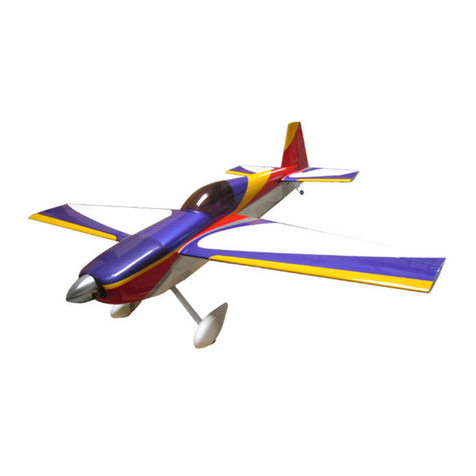
Doc. No.# AW70-105-01, Copy Right 2005, AirWild Hobbies, Inc. page 6of 6
If you decide to purchase the AirWild h
ardware package, it should leave you with just components are that are
mostly a matter of personal preference to purchase. These may be things such as servo choices, scheme of radio
installation and possibly other appearance related items. Feel free to consult the following list as it reflects what we
used to complete many of our prototype airplanes.
Description Qty.
Comment
AirWild Twist'd Servo Extensions, 36" 2
For elevator servos (use 36” + 12” to build up a 48” length, may vary)
AirWild Twist'd Servo Extensions, 12" 4
For elevator, aileron servos
AirWild Twist'd Servo Y-Connect, 10" 3
For aileron 2X, rudder servos 1X
AirWild Twist'd Servo Extensions, 6" 2
For aileron connections, from Rx
Cermark DSC Switches 3
2 for receiver batteries, 1 for ignition battery
AirWild 35% Pilot Figure 1
Optional
Smart-Fly Optical Kill Switch 1
Ignition Kill (STRONGLY RECOMMENDED FOR SAFETY)
Smart-Fly BatShare 1
Allows you to use two batteries to drive one Rx w/o concern for bat.
Failure
2X battery capacity + redundancy
Cermark NiMH 6V/1650mA 2
For Rx
Cermark NiMH 6V/2700mA 1
For Ignition
CF Nomex Panel, 12"x12" 1
Optional. Used to build floor board for mounting of Rx etc.
AirWild Nova Extra Spinner, 5" 1
Hitec 5945 Hi-Torque Digital Servo 8
Aileron x 4, elevator x 2, rudder x 2
Hitec 5245 Digital Mini Servo 1
Throttle
AirWild MLP Servo Arm, 2.5" 2
For rudder pull-pull use (ganged servos, series configuration)
Hanger 9 Pro Links 4
For rudder pull-pull use (length may vary depending on your placement)
Hanger 9 1/4 HD Double Ball Link 2
For rudder pull-pull use (approximately 2”~2.5” length)
Dubro 1/4 HD Ball Link 2
For rudder pull-pull use (ganged servos, series configuration)
Dynamite Pro Filter 1
Fuel Filter
Engine, 100cc, Gasoline1
DA100, 3W106 etc.
Propeller 1
NX 27x10 2-blade, NX 28x10 2-blade, NX 26x12 3-blade (check w/
engine guide)
AirWild WingPAK Pro-Series 1
Optional, for 35% size
Again we want to emphasize that this list reflects our particular requirements only. Make changes in accordance to
your specific considerations.




























